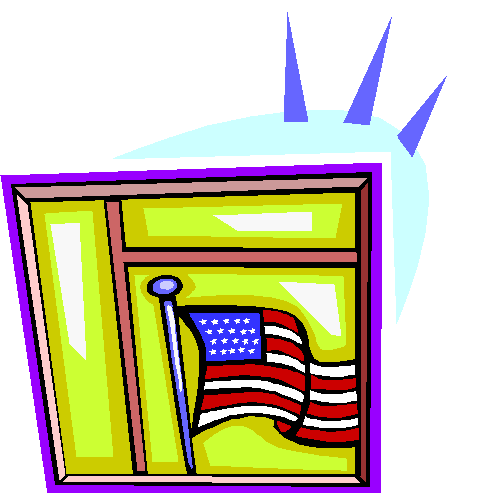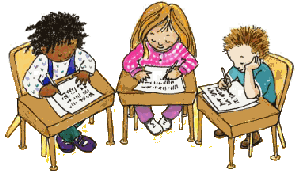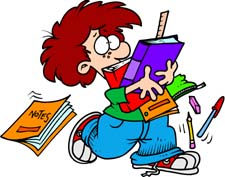
Stories That Really Add Up:
Exploring Ways In Which Children's Stories
Can Be Used To Teach Math

Stories That Really Add Up:
Exploring Ways In Which Children's Stories
Can Be Used To Teach Math
A Learning
Module
developed by Mrs. Cirino
for our 4th Grade Classroom
The purpose of this learning module is for you to learn a particular math concept so well, you can then teach it to other students and have a lot of fun by using the story Goldilocks and the Three Bears to do it!
![]() Think
Sheet #1
Think
Sheet #1
Remember when we read the story, Goldilocks and the Three Bears? We also watched the a video with a different version of the story. Then, we had the video conference with the museum in Beverly Hills on Fractured Fairytales. We had a wonderful opportunity to discuss not just the various versions of this story, but all of the math concepts that could be taught using the story as a background.
In your groups, read and discuss the New York Times article, "Family Fare: Great Books to Count On". After reading and discussing the article, take notes on group answers to the following questions:
§ What children’s stories are involved in the “Go Figure!” exhibit and what math concepts do the related exhibits teach, according to the article?
§ Do you agree with Maxwell Felder’s statements that “if there’s one thing adults are afraid of more than kids are it is math”? Why or why not?
§ What other exhibit is currently at the Children’s Museum of Manhattan and what is special about it?
![]() Think
Sheet #2
Think
Sheet #2
Each team has already selected a California Academic Math Content Standard. The teams and standards are:
Team 1: Number Sense – 1.1 (Dominic S. - Leader: Yocelin, Yesenia, Alvaro, Sakiyia)
Team 2: Measurement & Geometry – 1.0 (Keaton - Leader: Michael, Cecilia, Patrick, Concepcion)
Team 3: Number Sense – 1.2 (Jason - Leader: Gabrielle, Melissa, Maria, Adrian)
Team 4: Mathematical Reasoning 2.1 – (Matthew - Leader: Tryesha, Michelle, Dominic T., Joey)
Team 5: Statistics, Data Analysis, and Probability 1.2 (Julia - Leader: Eileen, Andre, Emmanuel, Crystal)
Team 6: Algebra – 1.1 (Anthony
- Leader: Stephanie, Itan, Chante, Carlos)
Each team should study their concept and have a thorough understanding, before developing a lesson plan that teaches the concept to another group.
The first step is to locate your standard in your math textbook and read examples of the concept. Take notes, discuss your findings, and talk about how you will adapt the story to teach the concept.
![]() Think
Sheet #3
Think
Sheet #3
Next, in your group, complete exercises in your textbook that relate to the standard. Again, you want to work together. Make sure everyone in the group understands the concept very, very well. You cannot teach something you do not know yourself. Work together!
![]() Think
Sheet #4
Think
Sheet #4
Then, go to the Internet and search for lessons, activities, and games that teach your math concept. Use http://www.yahooligans.com.
Each website that you and your team find to be useful in helping you to learn and practice your concept should be saved. Bookmark the website and then add it to your ikeepbookmarks.com account for math.
After you have at least 5 – 10 links for your math concept, print your ikeepbookmarks.com page and keep it in your folder.
Remember to put comments when you enter the link. This way, anyone wanting to use your link has an idea of what the website contains and can decide if they want to visit the website. Be sure to explore the website thoroughly, before deciding to use it as one of your team's links.
![]() Think
Sheet #5
Think
Sheet #5
§ In one sentence, what is the objective of your lesson? In other words, what do you want students to learn? (The sentence should begin, “In this lesson, students will learn . . . )
§ What prior knowledge will students need to know before this lesson can be taught? What math concepts will they need to know in order to learn this new concept?
§ How will you use “Goldilocks and the Three Bears” to teach this math concept?
§ What visual aids or manipulatives (items that students can manipulate with their own hands, like rulers or player cards) do you need in order to develop and teach this lesson?
§ How will you know if students understand the concept? Do you need to create a test or will students demonstrate their understanding through some different method or methods?
§ What problems can you anticipate in using this lesson to teach this concept and how might you eliminate those obstacles before or while teaching the lesson?
After you have discussed and have written down as a team all of the answers to the questions above, Technology Team leaders will do an oral presentation on the results of your team decisions. Leaders, use our oral presentation rubric as a guideline and practice.
![]() Think
Sheet #6
Think
Sheet #6
Now you are ready to develop a list of materials you will need, if any, in order to teach this lesson.
When you have all of your materials. You are ready to practice your math lesson.
Each team that you teach will evaluate you. The “student” group members evaluate the lesson based on accuracy and clarity of information, usefulness of visual aids and manipulatives, successful problem creation, creativity and other elements that might be assessed.
Go for it!!!!!!

Our Final Activity:
The last project we will do in this learning module will be to explore the differences that exist among fairy tales, folk tales, legends and fables. As a class, we will define each term and then find an example of each genre. For each story we find, let's write a paragraph or two explaining why the story is a perfect example of the story type or genre. Each entry will be combined to create a class book. Someone can even volunteer to enter them into a slide show presentation and post it to our website!

CONGRATULATIONS!
We just completed our first
Mathematics Learning Module!
Great Job!
 For
any students at home with far too much time on your hands:
For
any students at home with far too much time on your hands:
Challenge Activities:
§ Why do you think math is such an intimidating topic to so many people? How does math make you feel?
§ What different types of children’s stories can you name? What differences exist among these types of stories?
§ What are some common themes of children’s stories? What lessons do these stories hope to relay?
§ What purposes do children’s stories serve in different cultures around the world?
§ What is your favorite or most successful way to learn? Do you learn best by seeing, hearing or doing?
Great Books To Count On
By Laurel Graeber
Psychoanalysts and critics have long studied fairy tales and children's books, searching for hidden meanings. Now a new show at the Children's Museum of Manhattan reveals a subtext even Freud never thought of: math lessons.
Consider, for instance, "Goldilocks and the Three Bears." All the heroine's investigations chez Bears are also exercises in size and measurement. Or the book "Frog and Toad Are Friends: A Lost Button" by Arthur Lobel. An entertaining tale, yes, but also an introduction to the foundations of geometry.
Developed by the Minnesota Children's Museum, the show "Go Figure!" also explores math in "The Quilt" by Ann Jonas (all about patterns), "The Doorbell Rang" by Pat Hutchins (number sense) and "Arthur's Pet Business" by Marc Brown (problem solving). Parents are encouraged to take part in exhibition activities with their children.
"If there's one thing adults are afraid of more than kids are it's math," said Maxwell Felder, the museum's director of marketing. "And for kids below the second grade, it's hard to find an easy way to teach it."
The show is also lots of fun, offering, for instance, the opportunity to test the chairs at the Bears' house and to whip up a pretend meal for the guests in "The Doorbell Rang."
In addition to saluting the numbers in children's literature, the museum is also saluting the art. Another new show is "Celebrating 60 Years of Curious George: The Art of Margret and H. A. Rey," which includes the illustrations that the Reys created for the "Curious George" books, a series about an inquisitive monkey.
The show is accompanied by a display of yellow hats, all patterned after the one worn by Curious George's human companion. Decorated by celebrities like Rosie O'Donnell and Bette Midler, the hats are to be auctioned in December to benefit the Family Healing Fund, earmarked for arts programs for children.
Copyright 2001 The New York Times Company
![]() Return to Mrs. Cirino's Classroom Homepage
Return to Mrs. Cirino's Classroom Homepage